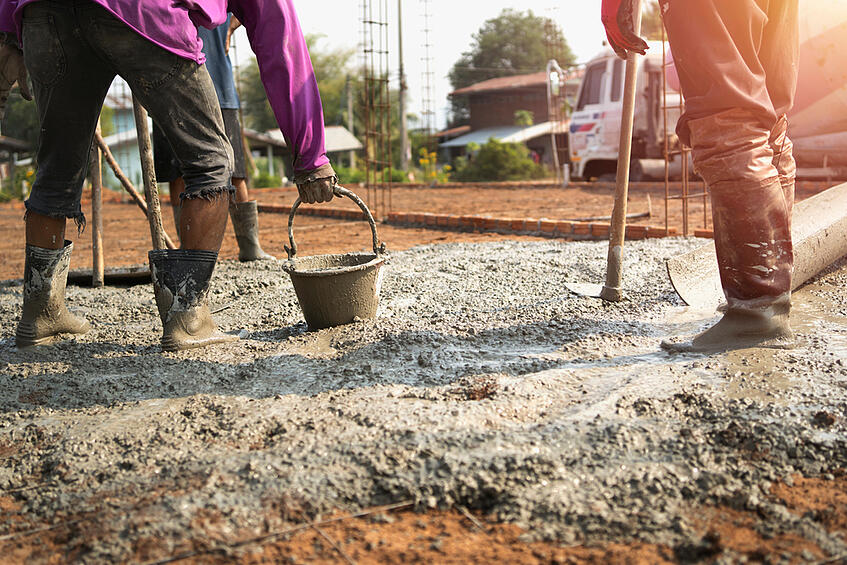Concrete sidewalks can vary in shapes, colors and be formed into any shape you can imagine. Before starting on this project, look around at other homes and businesses to see what can be done but don’t be limited by what you see. Use your imagination. Colored concrete is available today from most Redi-mix suppliers and concrete color stains are also another way to obtain a beautiful finished product. There are “cast-on” products out there that can provide a non-slip surface, a super hard surface and even anti-spalling compounds that help keep the sidewalk from chipping due to the use of winter salt. Most redi-mix concrete dries in some shade of beige color depending on the color if the sand and Portland cement used. Ask your supplier where he has poured his product and go look at it. This will give you an idea of what the “aged” product will look like later. Once you have decided what color concrete you are going to use, decide what strength concrete you need. I recommend the use of 3000# strength concrete for all sidewalks except very heavy use or vehicle traffic. If vehicles will be crossing the sidewalk, use 4000# or 5000#. It will cost a few dollars more a yard, but will last a great deal longer.
Hammer, sledge, string line, and level with tripod. 4′ hand level, pointed and flat shovels, wood 2×4 for screeding (leveling) of the concrete, bolt cutters, safety glasses, work gloves, fine broom and two edger’s called sidewalk edger’s and v-groove styles. A metal sidewalk edge finishing tool, a V-groove tool for center joints and a steel trowel are a must. Most masons prefer to use a magnesium float to put the initial finish on their walks prior to applying the final broom finish.
Concrete is ordered by the cubic yard. It is quite simple to figure out how many yards you need for your project using the following formula: Length x Width x Height (thickness) divided by 27 =? Cubic yards. A typical example: Your sidewalk is 3′ wide, 3-0 feet long by 4″ thick. Using the formula above: 3′ x 30’x.33 /27=1.1 cubic yards. You cannot order.1 cubic yards. So it is either 1 or 1.5 yards. All Redi-mix companies charge what they call a short load charge for anything under 6 yards. So there are choices here to be made. Is there anything else that needs concrete? Make the walk a little wider? Add a patio area? Ask the Redi-mix company what the charge is for 1.5 or 2 yards. The price may be the same anyway. While we here, I want to spend a minute discussing getting the concrete to your site. Trucks are heavy. Very heavy. If your sidewalk or patio is in the rear yard, either the truck has to be able to get to it or you will have to wheel it in wheelbarrows. Wheeling 1 yard is not bad, wheeling 5 or 6 yards is a brute. You will need plenty of help and good wheelbarrows. Redi-mix companies also charge extra for any time spent over 1 hour on site. IF you decide to take the truck into the rear yard, be prepared for lawn damage. Concrete companies are not responsible for damage to your property if you direct them to drive over the lawn. Worse yet is if they pass over the septic system, buried pipes, etc. and damage them. BE SURE there is nothing underneath that can de damaged. Don’t guess!


